“In the early morning on the lake sitting in the stern of the boat with his father rowing, he felt quite sure that he would never die.” Ever since I turned 40—that is to say, for a week now—this final sentence of Hemingway‘s “Indian Camp” has been rattling around my head. When I first read it, back in college, it landed like a hard left hook, knocking me flat with recognition. (I can’t be alone in this; Cormac McCarthy nicked the phrasing for the end of Blood Meridian.) Right, I thought. Exactly. But now, revisiting the end of “Indian Camp,”‘ I see that my younger self was missing at least half the point: It’s supposed to be ironic! Of course he’s going to die! In fact, maybe that’s why the line has been on my mind, along with Dante‘s “mezzo del camin di nostra vita” and Yeats‘s “widening gyre” and Larkin‘s “long slide.” For though I’ve managed to avoid until now the garment-rending and gnashing of teeth around birthdays (“Age ain’t nothing but a number,” right?) forty really does feel like a delineation. At 39, rocking the Aaliyah quote is still a youthful caprice. At 41, it’s a midlife crisis.
And the fact that I’m no longer immortal would seem to raise some questions about the pursuit I’ve more or less given my life to: reading. Specifically, if you can’t take it with you, what’s the point? Indeed, I now wonder whether the bouts of reader’s block I suffered in 2014 and 2017 had to do not with technological change or familial or political crisis, but with the comparatively humdrum catastrophe of getting older. Yet 2018 found me rejuvenated as a reader. Maybe there was some compensatory quality-control shift in my “to-read” pile (life’s too short for random Twitter) or maybe it was just dumb luck, but nearly every book I picked up this year seemed proof of its own necessity. So you’ll forgive me if I enthuse here at length.
First and foremost, about Halldór Laxness‘s Independent People. This Icelandic classic had been on my reading list for almost a decade, but something—its bulk, its ostensible subject (sheep farming), its mythic opening—held me back. Then, this summer, I took a copy to Maine, and as soon as Bjartur of Summerhouses blustered onto the page, the stubbornest hero in all of world literature, I was hooked. As for those sheep: This is a novel about them only in the sense that Lonesome Dove is a novel about cows. And though I love Lonesome Dove, Independent People is much the better book. Laxness’s storytelling offers epic sweep and power, but also, in J.A. Thompson‘s stunning translation, modernist depth and daring, along with humor and beauty and pain to rival Tolstoy. In short, Independent People is one of my favorite novels ever.
Also among the best things I read in 2018 were the shorter works that padded out my northern travels: Marilynne Robinson‘s Housekeeping and the novels of Jenny Erpenbeck. I’m obviously late arriving to the former; there’s not much I can say that you won’t have heard elsewhere, or experienced yourself. (Still: the prose!) Of the latter, I can report that The End of Days is ingenious, as if David Mitchell had attempted Sebald’s The Emigrants. And that Go, Went, Gone, notwithstanding Jonathan Dee‘s careful gift-horse inspection in Harper’s, is even better. But for my money, Erpenbeck’s finest novel is Visitation, which manages to pack much of the story of 20th-century Germany into the 190-page description of a country house. In any case, Erpenbeck’s writing, like Robinson’s, seems built to endure.
On the nonfiction front, I spent a week this fall immersed in Thomas de Zengotita‘s Politics and Postmodern Theory, a heady, lucid, and ultimately persuasive philosophical recasting of nearly a half-century of academic kulturkampf. Much as Wittgenstein (who gets a chapter here) claimed to resolve certain problems of philosophy by showing them to arise from elementary confusions, de Zengotita seeks to dispel muddles over the legacy of post-structuralism and the Enlightenment thought it ostensibly dismantled. He does so by giving key 20th-century thinkers—Kristeva, Derrida, Deleuze, Judith Butler—a rereading that is rigorous, respectful, accessible, and, in important ways, against the grain. As an etiology of the current cultural situation, this book belongs on a shelf with Frederic Jameson‘s Postmodernism and David Harvey‘s The Condition of Postmodernity. And, notwithstanding its price tag, anyone who cares deeply about issues of identity and solidarity and being-in-the-world today should heed its lessons.
This was also a year when the new-fiction tables at the bookstore seemed reinvigorated. For my money, the best American novel of 2018 was Rachel Kushner‘s The Mars Room, whose urgent blend of social conscience and poetic vision made debates about “reality hunger” and the value of fiction seem not just quaint but fallacious. So, too, with Mathias Énard‘s Compass, now in paperback in a crystalline translation by Charlotte Mandell. It would be hard to find a novel more indebted to historical reality, but in its fearless imagination, Compass turns these materials into something properly fictive, rather than factitious—and wholly Énard’s own. And I’d be remiss not to mention Deborah Eisenberg‘s story collection Your Duck Is My Duck. Eisenberg writes the American sentence better than anyone else alive, and for anyone who’s followed these stories as they’ve appeared, serially, her brilliance is a given. Read together, though, they’re a jolting reminder of her continued necessity: her resistance to everything that would dull our brains, hearts, and nerves.
And then you could have made a National Book Awards shortlist this year entirely out of debuts. One of the most celebrated was Jamel Brinkley‘s A Lucky Man. What I loved about these stories, apart from the Fitzgeraldian grace of Brinkley’s voice, was their tendency to go several steps beyond where a more timid writer might have stopped—to hurl characters and images and incidents well downfield of what the story strictly required and then race to catch up. More important than being uniformly successful, A Lucky Man is uniformly interesting. As is Lisa Halliday‘s Asymmetry. The “unexpected” coda, in my read, put a too-neat bow on things. I’d have enjoyed it even more as an unresolved diptych. But because the novel’s range and hunger are so vast, such asymmetries end up being vital complications of its interests and themes: artifice, power, subjectivity, and truth. They are signs of a writer who aims to do more than simply write what is within her power to know.
Any list of auspicious recent debuts should also include one from the other side of the pond: David Keenan‘s This Is Memorial Device (from 2017, but still). The novel presents—tantalizingly, for me—as an oral history of the postpunk scene in the Scottish backwater of Airdrie in the early 1980s, yet Keenan’s psychedelic prose and eccentric emphases make it something even more. I was reminded frequently of Roberto Bolaño‘s The Savage Detectives, and could not fathom why this book was overlooked in the U.S. Hopefully, the publication of a follow-up For the Good Times, will change that.
It was a good year for journalism, too. I’m thinking not of Michael Wolff or (God forbid) Bob Woodward, but of Sam Anderson, the critic at large for The New York Times Magazine, and his first book, Boom Town. If there’s one thing less immediately exciting to me than sheep farming, it’s Oklahoma City, which this book promises (threatens?) to explore. On the other hand, I would read Sam Anderson on just about anything. Here, starting with the Flaming Lips, the land-rush of 1889, and the unlikely rise of the NBA’s Oklahoma City Thunder, he stages a massive detonation of curiosity, sensibility, and wonder. (Favorite sentence: “Westbrook, meanwhile, started the season Westbrooking as hard as he could possibly Westbrook.”) And as with David Foster Wallace or John Jeremiah Sullivan, he leaves you feeling restored to curiosity and wonder yourself.
I’m also thinking of Pam Kelley‘s Money Rock, which focuses on the drug trade in 1980s Charlotte. It reminded me, in miniature, of a great book I’d read a few months earlier, David Simon‘s sprawling Homicide. Simon and Kelley are sure-handed when sketching the social systems within which we orbit, but what makes these books live is their feel for the human swerve—for Detective Terry McLarney of the Baltimore Homicide Squad or Lamont “Money Rock” Belton, locked up behind the crack game.
This was also the year I started reading J. Anthony Lukas, who, among the ranks of New or New-ish Journalists who emerged in the ’60s, seems to have fallen into comparative neglect. I checked out Nightmare, his book on Nixon, and was edified. Then I moved on to Common Ground, about the struggle to integrate Boston’s school system, and was blown away. With little authorial commentary or judgment, but with exhaustive reporting, Lukas embeds with three families—the Waymons, the McGoffs, and the Drivers—to give us a 360-degree view of a pivotal event in American history. The book has its longeurs, but I can think of few working journalists this side of Adrian Nicole Leblanc who’d be patient enough to bring off its parallactic vision.
In talking to friends about Common Ground, I kept hearing memories of its ubiquity on the coffeetables and library shelves of the 1980s, yet no one my age seemed to have read it. Like Homicide, it hangs in that long middle age where books slowly live or die—not news anymore, but not yet old enough to fall out of print, or to become a “classic.” Recommending these books feels like it might actually make a difference between the two. So here are a few more shout-outs: 1) John Lanchester, The Debt to Pleasure, from 1996. Anyone who relishes, as I do, the fundamental sanity of Lanchester’s essays will be surprised by the demented glee of his first novel. Its prophetic sendup of foodie affectation throws Proust into a blender with Humbert Humbert and Patrick Suskind‘s Perfume—and is maybe the funniest English novel since The Information. 2) Javier Cercas, Soldiers of Salamis, from 2001. I ran down a copy in preparation for interviewing Cercas and ended up thinking this may be my favorite of his books: a story of survival during the Spanish Civil War and of an attempt to recover the truth half a century later. In it, the heroic and the mock-heroic achieve perfect balance. 3) Emma Richler, Be My Wolff, from last year. Impressed by the beauty of Richler’s writing and the uncommon intelligence of her characters, I sent in a blurb for this one just under the deadline for publication, but still 50 pages from the end. When I finally got around to finishing it early this year, I found I’d missed the best part. I love this novel’s passionate idiosyncrasies.
And finally…back to Scandinavia. In August, while luxuriating in Independent People, I was asked to review CoDEX 1962, a trilogy by the Icelandic writer Sjón. This in turn forced me to put aside the introduction I’d been working on for the Danish Nobel Prize-winner Henrik Pontoppidan’s magnum opus, Lucky Per…which meant a further delay in finishing Book 6 of the Norwegian Karl Ove Knausgaard’s My Struggle. With more than 3000 pages of Nordic writing before me, I felt certain warning signals flashing. As Knausgaard writes (of being 40), “Why had I chosen to organize my life this way?” The truth is that there was no organization involved, just a random clumping of the reading list, and I’m happy to report that things are now back to normal. But once I got past the anxiety, I actually enjoyed my two solid months of Nordic fiction. I wasn’t totally convinced by CoDEX 1962, but a couple of Sjón’s shorter novels killed me—especially Moonstone, a coming-of-age story set in Rekjavik in the cataclysmic early days of cinema. And though most of Pontoppidan’s corpus hasn’t been translated into English, the novellas The Royal Guest, The Polar Bear, and The Apothecary’s Daughters, make fascinating companions to Joyce, Conrad, and Chekhov…if you can find them. (Lucky Per will be republished by Everyman’s Library in April.) As for Knausgaard, the final volume of My Struggle is one of the more uneven of the six, and I’m still digesting the whole. But at this point almost a decade of my life is bound up with these books. All these books, really. And that strange adjacency of real, finite life and the limitless life of the imagination…well, maybe that’s been the point all along.
More from A Year in Reading 2018
Don’t miss: A Year in Reading 2017, 2016, 2015, 2014, 2013, 2012, 2011, 2010, 2009, 2008, 2007, 2006, 2005
The post A Year in Reading: Garth Risk Hallberg appeared first on The Millions.
from The Millions https://ift.tt/2rElpDk





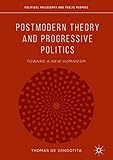



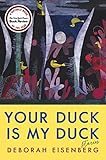


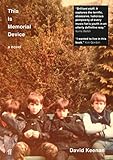


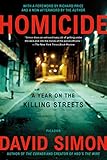
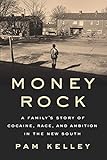
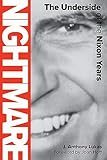
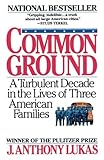



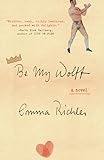

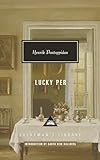

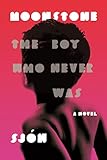
Comments
Post a Comment